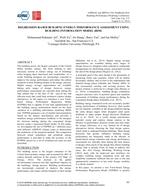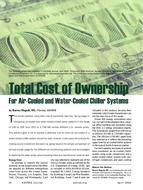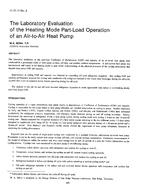Numerous pilot projects conducted all over the world havedemonstrated that energy use in commercial and public buildingscan been reduced by more than 50% after renovation. Infact,some renovated buildings have met the Passive House Instituteenergy efficiency standard or have even achieved a net zeroenergy state (Zhivov et al. 2015). Research (IEA 2009;ASHRAE2015) has identified more than 400 energy efficiency measuresthat can be used when buildings are retrofitted. Such measuresinclude those related to the building envelope, mechanical andlighting systems, energy generation and distribution, and internalprocesses. Implementation of some individual measures(such as building envelope insulation, improved airtightness,andcogeneration)cansignificantlyreducebuilding heatingandcooling loads or minimize energy waste, but require significantinvestments with long paybacks. However, when a limitednumber of core technologies are implemented together(“bundled”), they can significantly reduce energy use for asmaller investment and thereby provide a faster payback.Characteristics of some of these core technologymeasures depend on the technologies available on an individualnation’s market, on the minimum requirements of nationalstandards, and on economics (as determined by a life cycle cost[LCC] analysis). In addition to these measures, requirementsrelated to building envelope-related technologies (e.g., insulationlevels, windows, vapor and water barriers, and requirementsfor building airtightness) depend on specific climateconditions. National teams associated with the InternationalEnergy Agency Energy Conservation in Buildings andCommunities Program (IEA EBC) Annex 61, Business andTechnical Concepts for Deep Energy Retrofit of Public Buildings(EBC 2015), have studied such conditions by computersimulation (Case et al. 2016; Rose et al. 2016; Riel et al. 2016;Yao et al. 2016). This paper summarizes the results of thesestudies, which will be used in an IEA Energy in Buildings andCommunities (EBC) Programme Annex 61, Deep EnergyRetrofit—Case Studies (IEA 2015). The key to making a deepenergy retrofit(DER)cost effective is to time the retrofit as partof a major building renovation that already has allocatedfunds, including those required to meet minimum energyrequirements. Since there is an overlap between the funds allocatedfor the retrofit and those required for the DER, achievingthe DER requires only an incremental cost because the DERis evaluated based on a bundle of core technologies, not onindividual energy efficiency measures. To evaluate the costeffectiveness of DER project using bundles of core technologies,compared to a typical major building renovation basedon minimum energy requirements, this paper proposes the useof net present value (NPV) of the differences in energy savings,maintenance, and insurance costs and other operational costsand revenues to estimate the budget increase limit, whichmakes the DER project LCC effective. Since most of parametersrequired for an LCC analysis differ not only by the individualcountry but also within the country (first costs and laborrates, energy rates, life of the project, and inflation anddiscount rates), the concept of scalar Ratio (McBride 1995) isused to calculate limitations in renovation budget increase.
Citation: 2016 Winter Conference, Orlando, FL, Transactions 2016, Vol 122 pt. 1
Product Details
- Published:
- 2016
- Number of Pages:
- 22
- Units of Measure:
- Dual
- File Size:
- 1 file , 1.2 MB
- Product Code(s):
- D-OR-16-003


